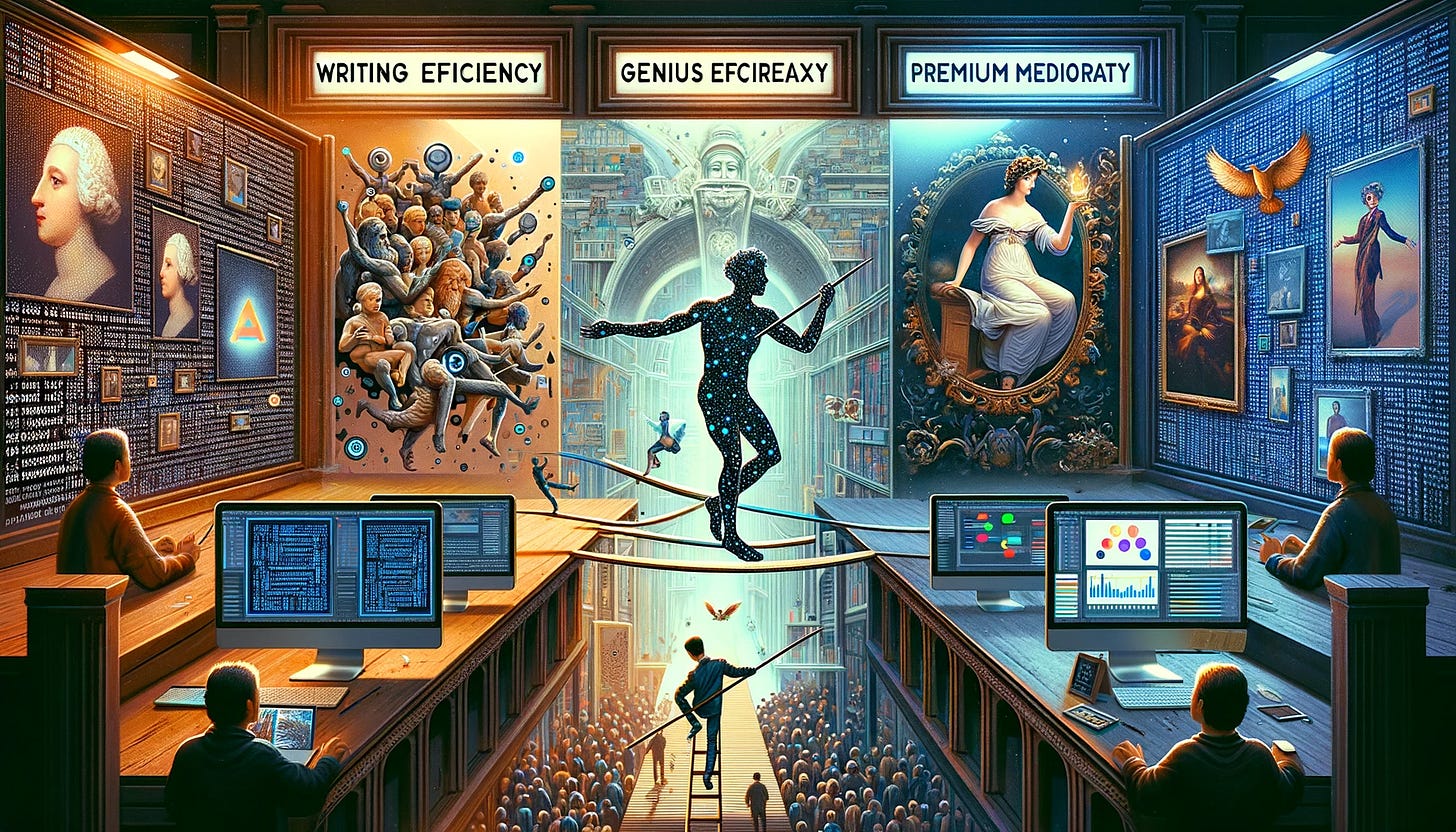Recently, I had an enlightening conversation with Tatjana Samopjan, a renowned creative consultant in film and TV series development. We delved into the essence of art, the anatomy of a compelling story, and the exciting potential of AI like GPT in enhancing storytelling.
In the evolving landscape of creativity, AI's role alongside writers is creating unexpected dynamics. Let me share three paradoxes that epitomize this creative confluence.
The Writing Efficiency Paradox
AI tools, designed to refine writing skills, ironically demand more time and deeper engagement. I've personally experienced this while using AI for rewriting. It's like a virtual writers' room, enhancing ideas and sharpening narratives but at a slower pace. This challenges the usual perception of AI as a tool for speedy content generation.
Tatjana goes one step further in the following segment and explains on how to use AI as a devil’s advocate during the writing process.
The Art Consumption Paradox
Masterpieces inspire life beyond the canvas. Great art urges us to engage more deeply with life, yet there's a constant push for consuming more content. Can AI bridge this gap? While AI can craft engaging narratives, can it ever rival the creation of true masterpieces that inspire life beyond the screen?
The Creative Mediocrity Paradox
AI's proficiency in generating premium mediocre content brings us to a critical dilemma: If writers are only rewarded for producing genius-level work, what happens to the journey towards that genius? There's a risk that removing the safety net of premium mediocre could discourage writers from taking the creative leaps necessary to produce truly groundbreaking stories.
These paradoxes shed light on the nuanced and often contradictory role of AI in the creative process. As we explore the potential of AI in storytelling, understanding and addressing these paradoxes becomes crucial.




